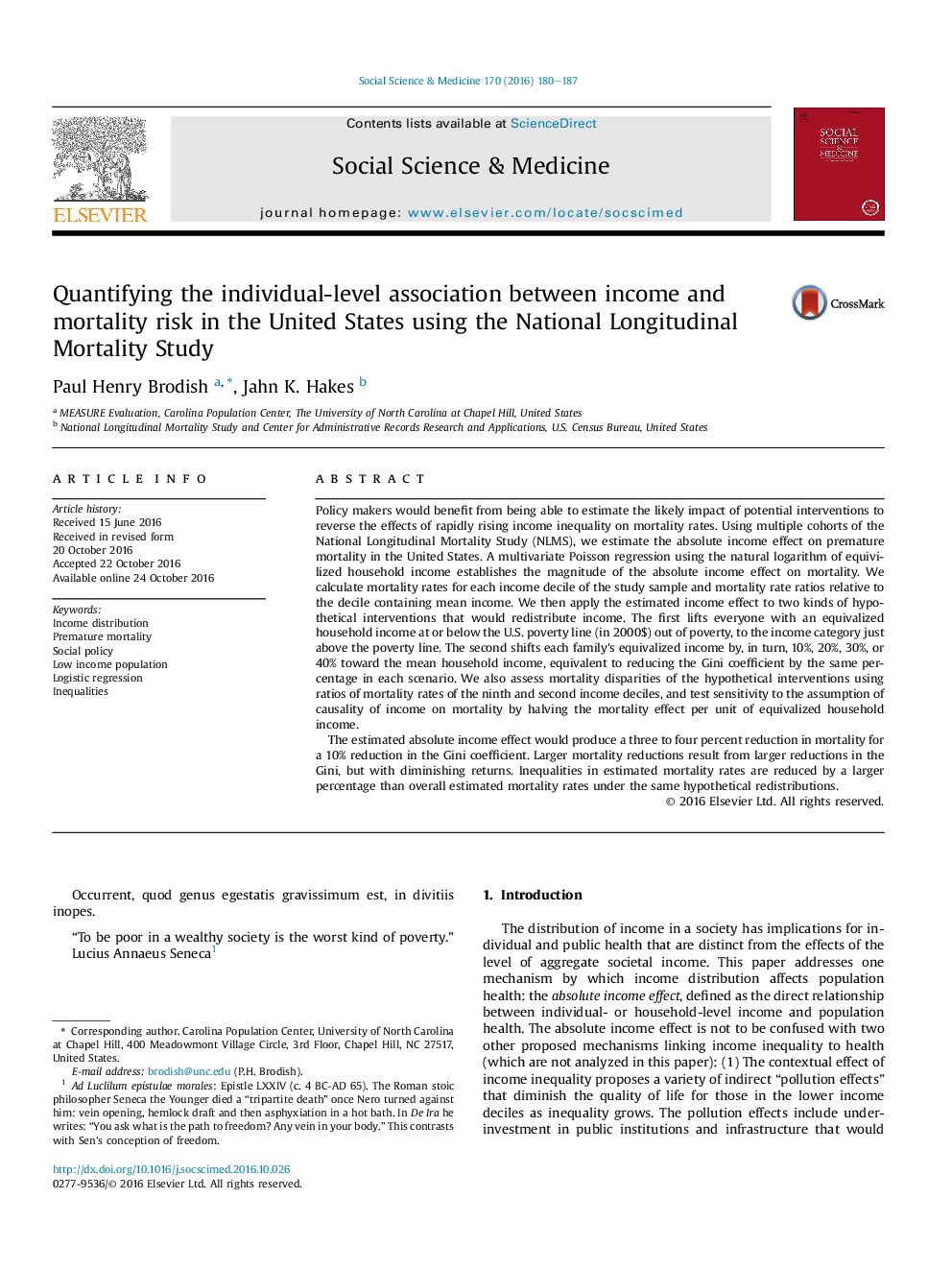| کد مقاله | کد نشریه | سال انتشار | مقاله انگلیسی | نسخه تمام متن |
|---|---|---|---|---|
| 5046867 | 1475999 | 2016 | 8 صفحه PDF | دانلود رایگان |

- The absolute income effect is quantified for a representative population in the US.
- A 10% reduction in the Gini coefficient reduces premature mortality by 3-4%.
- A 10% reduction in the Gini reduces inequalities in premature mortality by 10%.
- The observed income gradient in premature mortality is much steeper for women.
- Women in the poorest decile versus the 7th decile are 5 times more likely to die.
Policy makers would benefit from being able to estimate the likely impact of potential interventions to reverse the effects of rapidly rising income inequality on mortality rates. Using multiple cohorts of the National Longitudinal Mortality Study (NLMS), we estimate the absolute income effect on premature mortality in the United States. A multivariate Poisson regression using the natural logarithm of equivilized household income establishes the magnitude of the absolute income effect on mortality. We calculate mortality rates for each income decile of the study sample and mortality rate ratios relative to the decile containing mean income. We then apply the estimated income effect to two kinds of hypothetical interventions that would redistribute income. The first lifts everyone with an equivalized household income at or below the U.S. poverty line (in 2000$) out of poverty, to the income category just above the poverty line. The second shifts each family's equivalized income by, in turn, 10%, 20%, 30%, or 40% toward the mean household income, equivalent to reducing the Gini coefficient by the same percentage in each scenario. We also assess mortality disparities of the hypothetical interventions using ratios of mortality rates of the ninth and second income deciles, and test sensitivity to the assumption of causality of income on mortality by halving the mortality effect per unit of equivalized household income.The estimated absolute income effect would produce a three to four percent reduction in mortality for a 10% reduction in the Gini coefficient. Larger mortality reductions result from larger reductions in the Gini, but with diminishing returns. Inequalities in estimated mortality rates are reduced by a larger percentage than overall estimated mortality rates under the same hypothetical redistributions.
Journal: Social Science & Medicine - Volume 170, December 2016, Pages 180-187